D-Link Covr-C1203
Competitively priced, great on-paper performance, funky industrial design. What’s not to like about D-Link’s new Covr-C1203 mesh networking kit? Not much, at first glance.
Mesh networking is all about spreading high speed wireless networking across your home or small office and doing it as painlessly and easily as possible. The idea is that you connect the main basestation to your existing modem or modem-equipped router and then place the secondary modules or nodes in locations that help extend coverage and make it more reliable.
What you don’t have to do is worry about multiple passwords and network SSIDs, or which node has the best signal for wherever you happen to be. A single ID and password covers the lot and, in theory, some intelligent connection management keeps you connected to the best node. So, you log a device in once and then you can seamlessly move from room to room and node to node and let the mesh network manage everything.
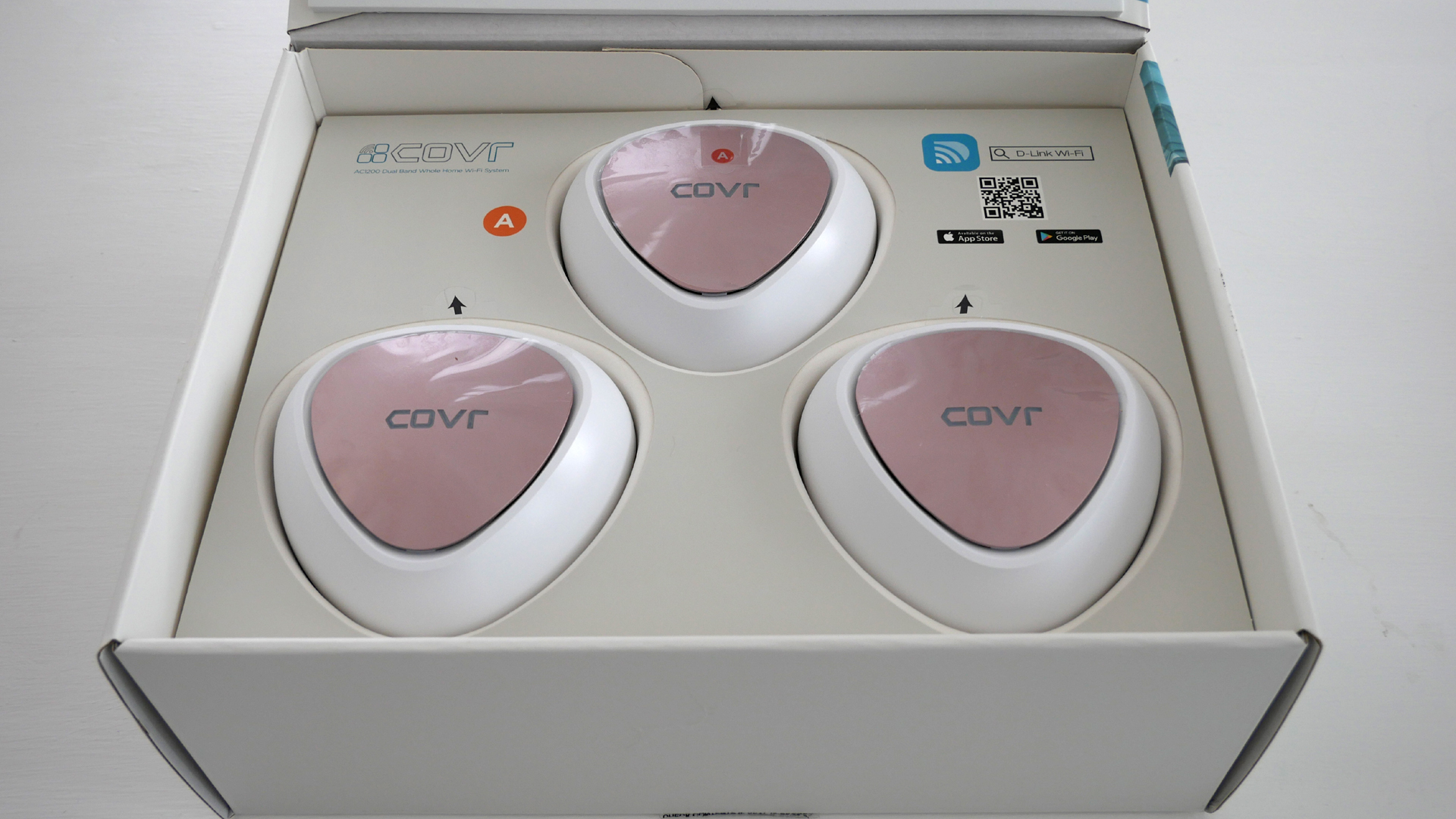
Price and availability
At around $250 (£210 and AU$390), the D-Link Covr-C1203 is similarly priced to some triple-node mesh networking solutions from the likes of Linksys, but significantly cheaper than alternatives like a three-way Google WiFi kit.
It’s worth noting that this triple-unit Covr package is designed for areas up to 465 square metres or 5,000 square feet. The dual-node Covr-1202 is good for 3,000 square feet and can be had for significantly less.
Design and setup
Strictly speaking, D-Link’s Covr nodes don’t provide the very best possible wireless performance. They’re equipped with dual-band 802.11ac capability on the 2.4GHz and 5GHz bands. For those who demand the very highest performance, triple-band solutions will be preferable.
That said, with up to 1.2Gbps of theoretical performance, this dual-band kit will have plenty of headroom above most if not all internet connections. Where the performance limitations are more likely to be felt is moving files around the local network, although that’s a rather niche activity these days.
Inside the slickly-designed box you’ll find three nodes, a power adapter for each and a funky flat Ethernet cable. Each node has a pair of gigabit Ethernet ports, one of which is used on the primary node to connect to your existing broadband modem or router. Alongside that is a USB Type-C port to provide power. The nodes also have WPS buttons to aid with connecting smart devices like printers and cameras.
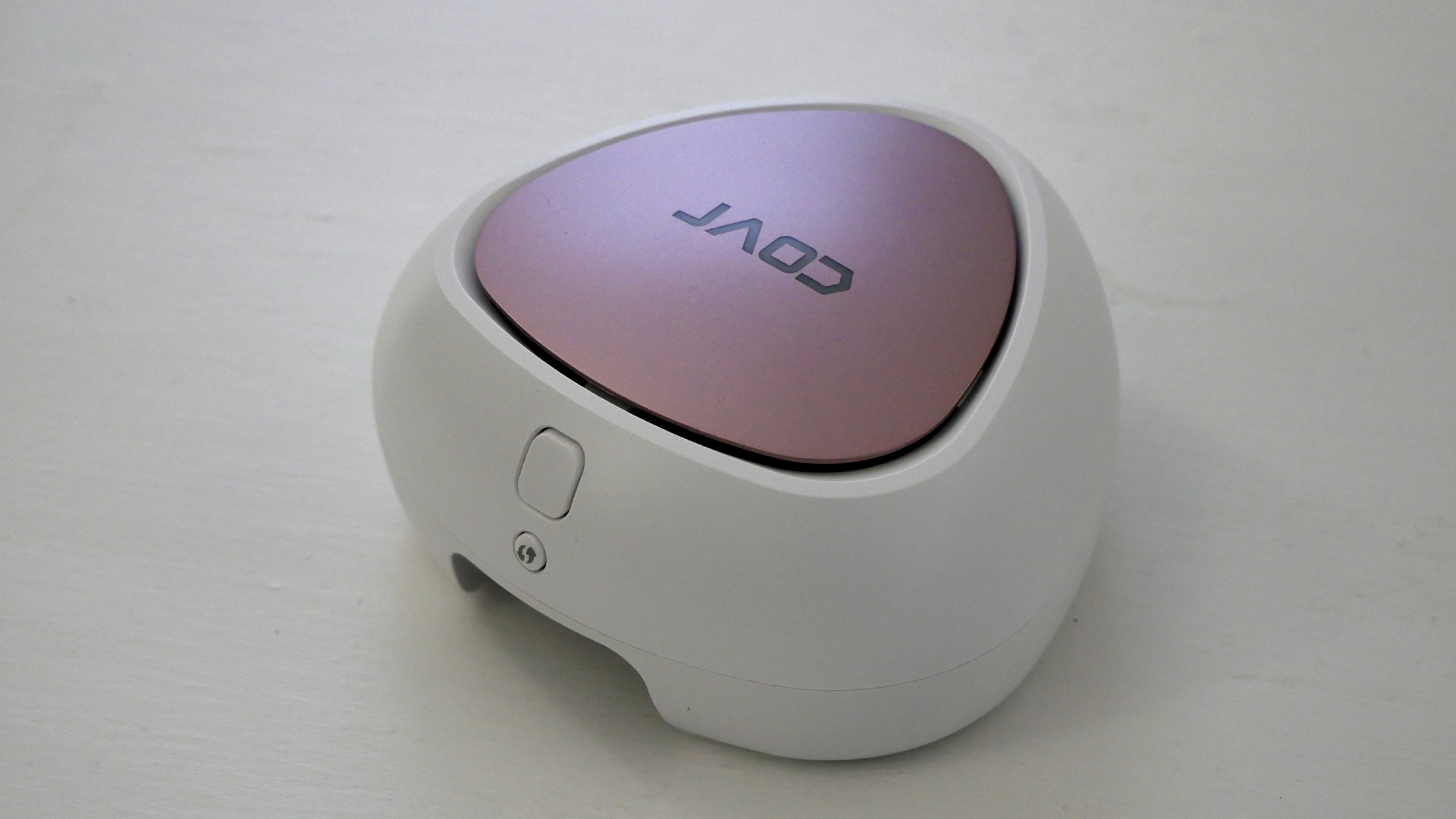
The nodes themselves are pleasingly futuristic triangular orbs made of white plastic with metal-effect shields on top. The shields each contain ‘Covr’ logos with multi-colored LEDs that glow to indicate status, such as booting, connecting or fully operational. The LEDs are quite bright, but if you prefer a more subtle setup, the LED functionality can be disabled.
Inside, D-Link has provided so-called Smart Steering technology designed to ensure that your devices are always connected to the strongest wireless signal, along with three internal antennas and support for MU-MIMO technology for high performance streaming to multiple devices simultaneously.
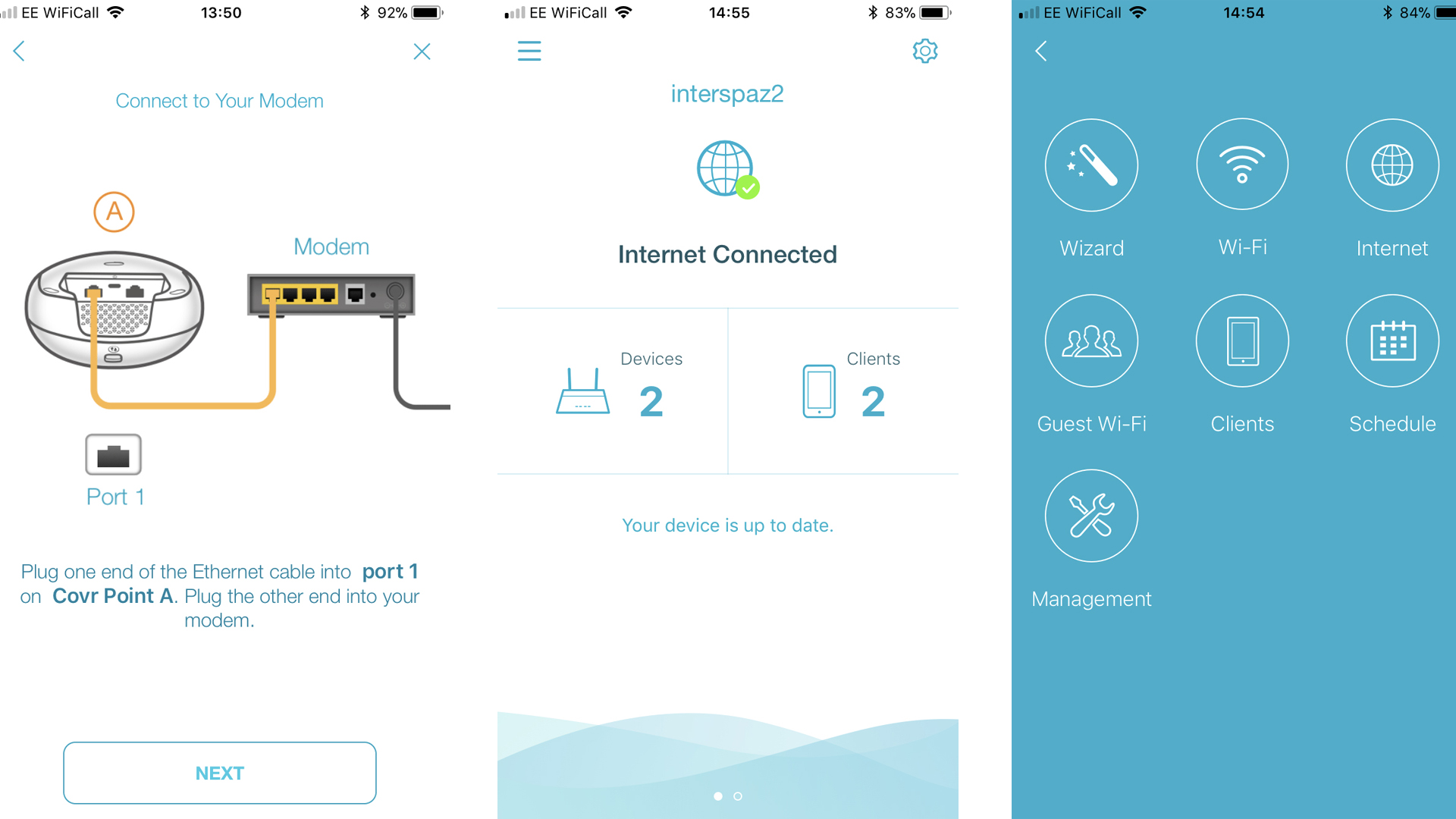
Setup is done via a very user-friendly smartphone app, available for both iOS and Android. You just connect the primary node via Ethernet to your router and plug it into the power.
Then, use the supplied quick install card complete with QR code to get you phone connected to the primary node without having to manually input a long and complicated password.
Follow the instructions, which will get you connected and tell you when to plug in and power up the secondary nodes. Although the Covr app failed to recognise the primary node on the first attempt, from there after it was smooth sailing and roughly a five minute job.
Performance
Our test venue was a period Georgian property in Bath, UK, with a mix of semi open-plan areas and rooms cut off by thick stone walls. Short range and line-of-sight wireless performance proved excellent.
In fact, internet speeds are virtually indistinguishable from hooking up to our BT router via a wired Ethernet connection. In both cases, download speeds peak at just over 70Mbps, compared to an advertised service speed of 67Mbps.
Steam game downloads were similarly on a par with a wired connection, topping out at 8.2MB/s, which is as much as you could reasonably expect given the headline internet connection speed. As for uploads, these again were on a par with hooking up via Ethernet at 19Mbps.
Longer range and transmitting through walls, performance is a little more varied. On the 5GHz band, the Covr mesh network never dropped below 61Mbps for downloads, no matter where we positioned client devices, including behind walls.
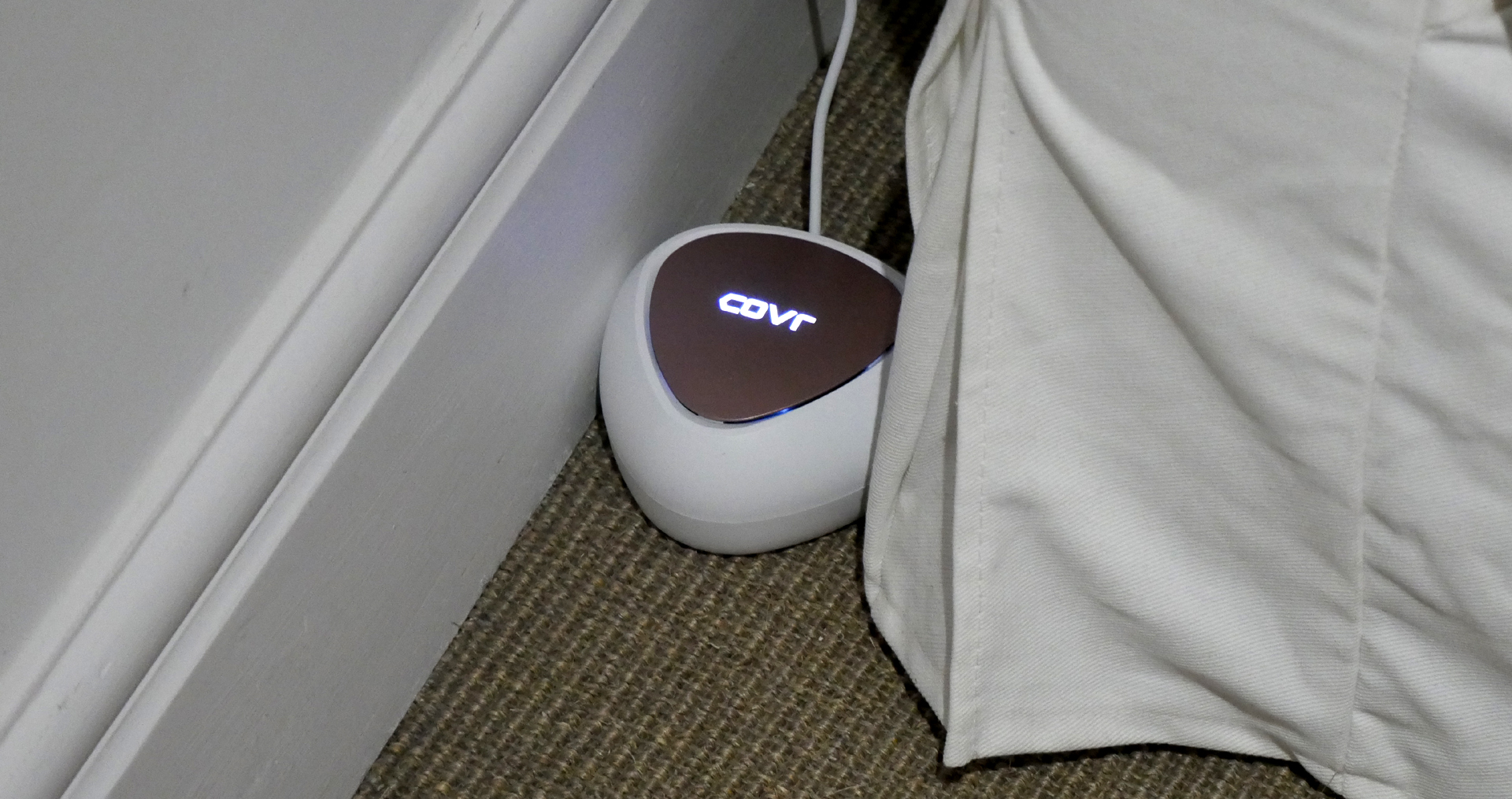
However, it’s the 2.4GHz band that sees performance drop off much more tangibly. In a home cinema located in old Georgian vaults without a direct line of sight to the nearest node and at a distance of around four to five metres, download speeds dropped to around 20Mbps on the 2.4GHz network.
While it’s true that the 5GHz band did a much better job of maintaining speeds, as a user you don’t have direct control over which devices connect on which band. To ensure our MacBook test laptop connected at 5GHz, for instance, we first had to disconnect an iPhone from the network. It’s not exactly a deal breaker. But it does make ensuring the best possible performance for any given device a little fiddly.
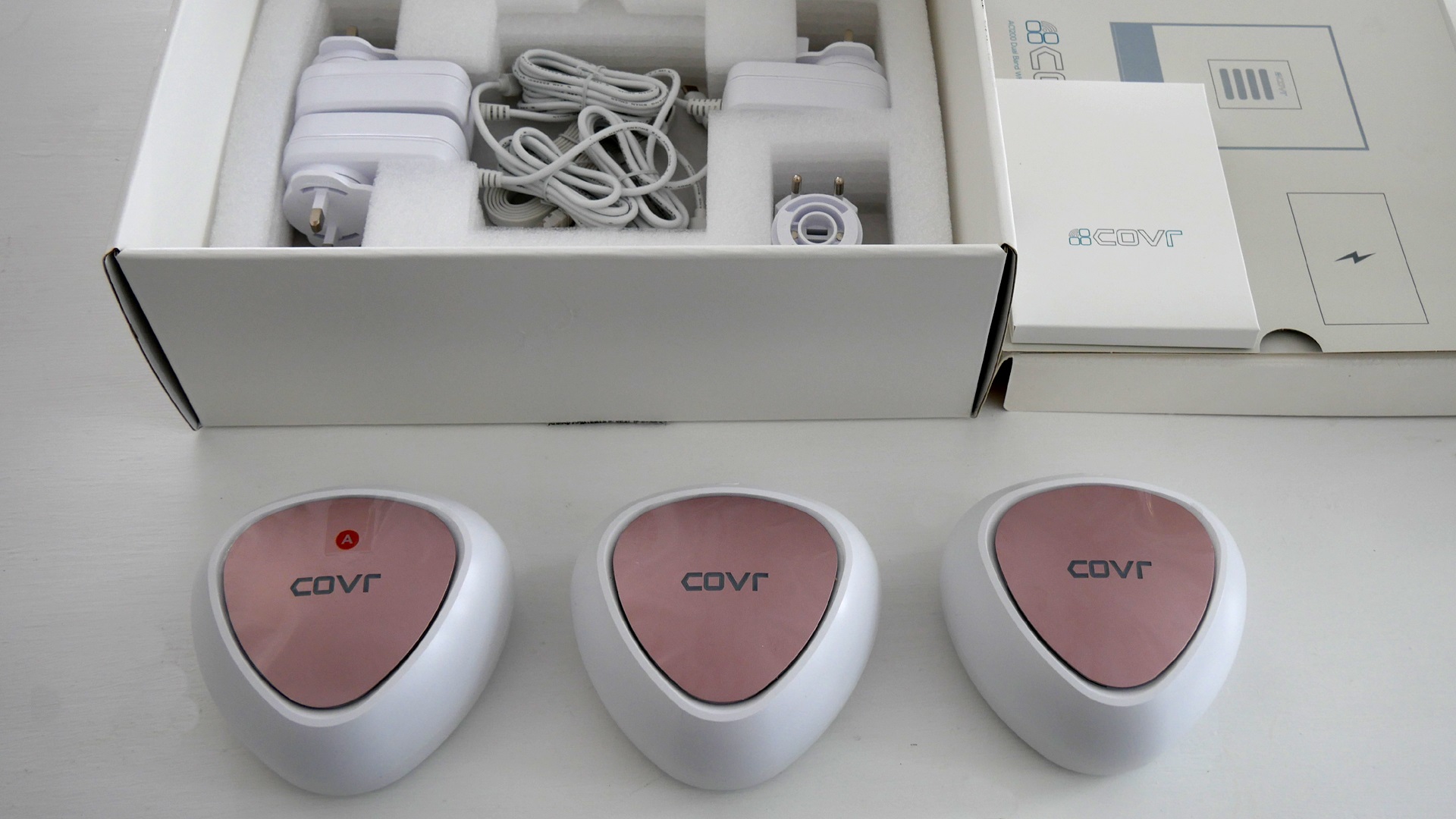
Verdict
The design of the nodes is attractive and the setup process is pretty painless, when it works. Some will find the LED lighting intrusive, however that can be disabled making it a moot point.
Meanwhile, performance on the 5GHz band is excellent, allowing seamless movement while maintaining internets speeds close to or on a par with a wired connection. A web based interface adds more advanced controls beyond those provided by the user-friendly smartphone app.
Setup via the smartphone app can be hit and miss, requiring reboots of individual nodes. Performance on the 2,4GHz band is disappointing and ensuring devices connect at 5GHz is not entirely straight forward. The design of the universal socket plate on the power adapters is also poor, with one of our adapters struggling to maintain connection and thus power to the node.
Overall, D-Link’s Covr kit is a mostly painless, pleasant and high-performing mesh networking solution. Setup, when it works, is simple and quick and the result is a reliable and fast home network, with a few provisos. Performance on the 5GHz band is excellent, but less so on 2.4GHz. The ability prioritise performance-sensitive devices for 5GHz connectivity would be a welcome addition.
- Check out our list of the best wireless mesh routers 2018
0 comments:
Post a Comment